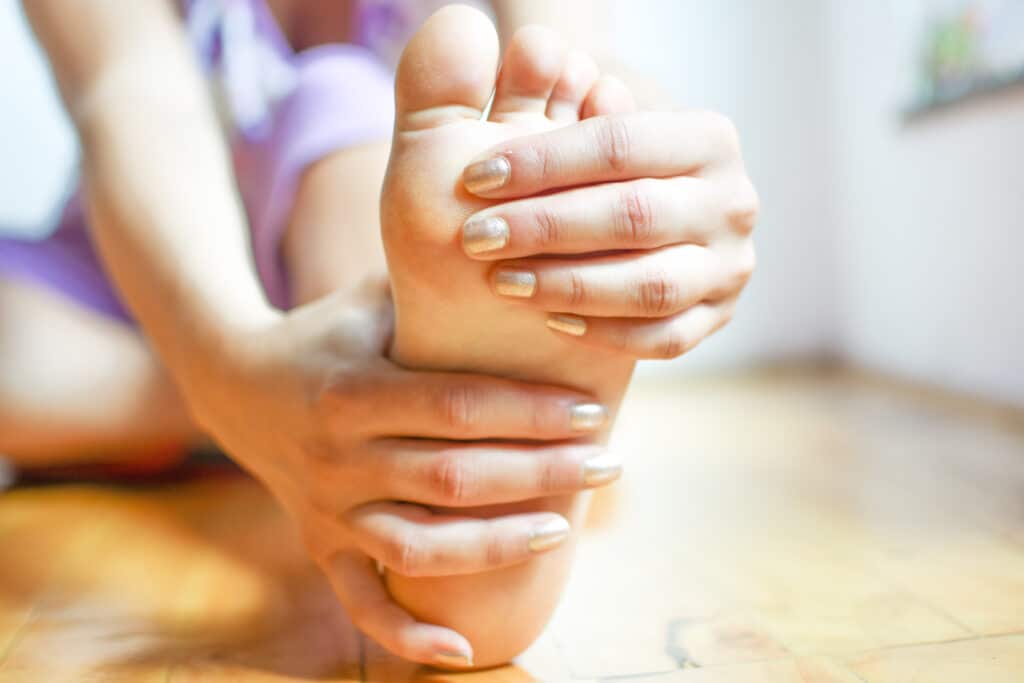
Morton’s neuroma, a painful condition affecting the ball of the foot, often causes significant discomfort and hinders daily activities. Understanding the relationship between inactivity and the worsening of Morton’s neuroma is crucial for effective management. This blog post will explore this relationship, the impact of various treatments, and how CARESPACE can provide a holistic, multidisciplinary approach to alleviate the condition.
What is Morton’s Neuroma?
Morton’s neuroma, also known as intermetatarsal neuroma, is a thickening of the tissue around one of the nerves leading to the toes. This thickening can cause sharp, burning pain in the ball of the foot, which may radiate into the toes. Symptoms often include a sensation of standing on a pebble or a fold in the sock. The exact cause of Morton’s neuroma remains unclear, but it is often associated with factors such as improper footwear, high-impact sports, and pre-existing foot deformities.
The Role of Inactivity in Morton’s Neuroma
Inactivity, characterized by prolonged periods of limited movement, can exacerbate many health conditions, including Morton’s neuroma. When the foot is inactive, several negative consequences can arise:
1. Muscle Weakness and Atrophy: Inactivity can lead to weakening and atrophy of the foot muscles, reducing their ability to support and protect the affected area. This can increase pressure on the neuroma, exacerbating pain and discomfort.
2. Decreased Blood Flow: Regular movement promotes healthy blood flow, which is essential for tissue repair and overall foot health. Inactivity can lead to reduced circulation, slowing the healing process and potentially worsening the condition.
3. Stiffness and Reduced Mobility: Lack of movement can cause stiffness in the foot and ankle joints, limiting mobility and potentially leading to compensatory movement patterns that place additional stress on the neuroma.
4. Weight Gain: Inactivity often leads to weight gain, which can increase the load on the feet and worsen symptoms of Morton’s neuroma.
5. Psychological Impact: Chronic pain and inactivity can contribute to feelings of frustration and depression, potentially reducing the motivation to engage in beneficial activities and exercises.
Incorporating physical activity in small doses, even walking for Morton’s neuroma, can have benefits.
How CARESPACE Can Help
At CARESPACE, we offer a comprehensive, client-focused approach to managing Morton’s neuroma. Our multidisciplinary team, including physiotherapists, chiropractic doctors, and other health professionals, collaborates to develop personalized treatment plans tailored to each client’s needs and goals.
The Role of Physiotherapists
Physiotherapists in Kitchener Waterloo at CARESPACE play a crucial role in managing Morton’s neuroma through various interventions:
1. Exercise Prescription: Physiotherapists design specific exercises to strengthen the foot and lower leg muscles, improving support and reducing pressure on the neuroma. These exercises may include toe stretches, foot rolls, and calf raises.
2. Manual Treatment: Techniques such as massage, mobilization, and stretching can help alleviate pain, reduce stiffness, and improve mobility. These treatments can also enhance blood flow, promoting healing.
3. Gait Analysis and Correction: Physiotherapists analyze gait patterns to identify any abnormal movements that may contribute to the condition. They then provide corrective strategies to promote proper alignment and reduce stress on the affected area.
4. Education and Footwear Advice: Educating clients about appropriate footwear and lifestyle modifications is crucial. Physiotherapists offer guidance on choosing shoes that provide adequate support and cushioning, reducing the risk of exacerbating the neuroma.
The Role of Chiropractic Doctors
Chiropractic doctors complement the physiotherapy approach by addressing spinal and lower limb alignment, which can have a significant impact on foot health:
1. Spinal and Lower Limb Adjustments: Chiropractic adjustments can improve overall alignment, reducing compensatory stresses on the foot and promoting better movement patterns.
2. Foot and Ankle Manipulations: Specific manipulations of the foot and ankle joints can help relieve pain, enhance mobility, and improve function.
3. Holistic Assessment: Chiropractic doctors take a holistic approach, considering how the entire body’s biomechanics can affect foot health. This comprehensive assessment helps in identifying and addressing underlying issues contributing to Morton’s neuroma.
4. Pain Management: Chiropractic care often includes modalities such as ultrasound, laser therapy, and electrical stimulation to manage pain and inflammation, supporting the healing process.
Coordinated Care at CARESPACE
At CARESPACE, our practitioners work together as a team to understand each client’s primary concerns and long-term health goals. Our coordinated care approach ensures that all aspects of a client’s health are considered, leading to more effective and long-lasting results.
1. Multidisciplinary Approach: Our team includes physiotherapists, chiropractic doctors, RMTs, dietitians, and other health professionals. This diverse team collaborates to create comprehensive treatment plans that address the root causes of Morton’s neuroma and promote overall well-being.
2. Personalized Care Plans: Each client receives a personalized care plan tailored to their specific needs and goals. These plans may include a combination of manual therapy, exercise, nutrition, and lifestyle modifications.
3. Client Education: Education is a cornerstone of our approach. We empower clients with the knowledge and tools they need to manage their condition effectively and make informed decisions about their health.
4. Ongoing Support: Our commitment to client care extends beyond the initial treatment phase. We provide ongoing support and follow-up to ensure that clients achieve and maintain their health goals.
Inactivity can indeed worsen Morton’s neuroma by contributing to muscle weakness, reduced blood flow, stiffness, weight gain, and psychological distress. However, with the right approach, it is possible to manage and alleviate this condition effectively. At CARESPACE, our integrated, multidisciplinary approach ensures that clients receive comprehensive care tailored to their unique needs. By combining the expertise of physiotherapists and chiropractic doctors, we help clients achieve fast, effective, and long-lasting relief from Morton’s neuroma, enabling them to lead healthier, more active lives.




